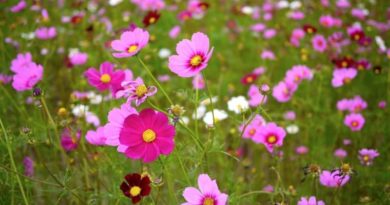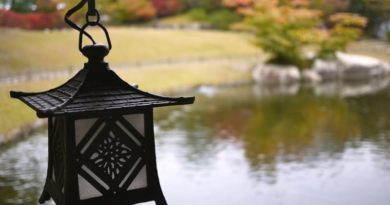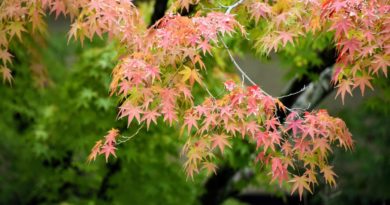Summer’s End
I made the mistake of moving to Hiroshima after three years in northern New England, where the brazen autumn colors turned country highways into parking lots lined with fruit stands and pumpkin patches. It took years before the numbness wore off, and I could appreciate autumn in western Japan on its own terms.
Autumn here is fleeting, a jewel box of a season that arrives late and soon gives way to winter. Best to make the most of it while you can. Luckily, there’s a good deal to be made.
If you’re here in autumn, you’ve chosen an excellent time to visit, with fewer travelers on the move and summer’s heat a fading memory. There’s a Japanese saying, onnagokoro to aki no sora, comparing the heart of a woman to autumn skies. The implication is one of fickleness and whimsy. Whatever may be true of hearts, weather conditions at this time of year can swing from muggy Indian summer to piercing wind and rain, or even a late season typhoon. Keep an eye on the weather forecasts, or take your chances.
One of Japan’s most spectacular destinations for autumn scenery is the island of Miyajima. Even before you consider the trees, the historic architecture is at its best in this season, with the bright reds of Itsukushima Shrine and its famous torii gate shimmering on the water and the shadowed recesses of Senjokaku glowering overhead. Be sure to make your way up to Daishoin Temple, where you’ll find some of the most beautiful views on the island.
But let’s get back to those trees. Because the entire island is sacred, felling lumber is forbidden. As a result, the flanks of Mt. Misen are blanketed in near-virgin forest, and you’ll see the full autumn palette here, from washes of rust and red to veins of gold and silver. But the real treasures are the Japanese maples. Different creatures entirely from the great, shaggy trees I knew in Vermont, these are trembling little flares of color shading from green to scarlet and even dusty purples. Momiji-dani, or Maple Valley, is a prime spot, though at the peak of the season in November you should expect to share the view with others. If you can go on a weekday, there will be far fewer people. In Hiroshima city, Mitaki Temple northwest of downtown (any cabbie will know the way) is another excellent place to savor a Japanese autumn, and likely to be less crowded even on weekends.
Another Japanese phrase is shokuyoku no aki, often translated as "autumn is for eating." They also say it's ideal for reading and sports, and perhaps there'll be time for those later, but for the moment let's tend to your belly. Seasonal favorites include kurigohan, rice cooked with chestnuts, persimmons ripe to bursting, fat little kabocha pumpkins, bubbling nabe stews seething with meat and vegetables, and silver Pacific saury grilled and served with grated daikon and miso soup. Matsutake mushrooms, fragrant and rare, are a classic autumn flavor but can be extremely expensive. Hiroshima is famous for its oysters, which are nearing their peak now, and if you're interested in trying traditional
confectionery, wagashi makers outdo themselves trying to capture the essence of the season in chestnut-laden sweets. That should be more than enough to keep you fed while you're in town.
I mentioned Miyajima's Daishoin Temple earlier. If you're in town on November 15th, you can attend a firewalking ceremony, starting at around 11 am. The ceremony is meant to purify participants, but it's also a fun way to see Buddhism in action, a welcome change from stumbling through temples wondering what it all means. You're welcome, even encouraged, to get in line and join the ceremony, and there's no charge.
Additionally, the 15th (a Saturday this year) is Shichi-go-san, a Shinto rite of passage for three, five and seven-year-old children. If you walk back down the hill to Itsukushima Shrine, you should be rewarded by the sight of little ones decked out in kimono and clutching their parents' hands as priests offer prayers for their health and happiness before handing them paper bags with sticks of chitose-ame, "thousand-year candy" meant to symbolize long life. Bring a camera.
It's a great town, and a wonderful time of year. Enjoy your stay.
Illustration by Naomi Leeman.





